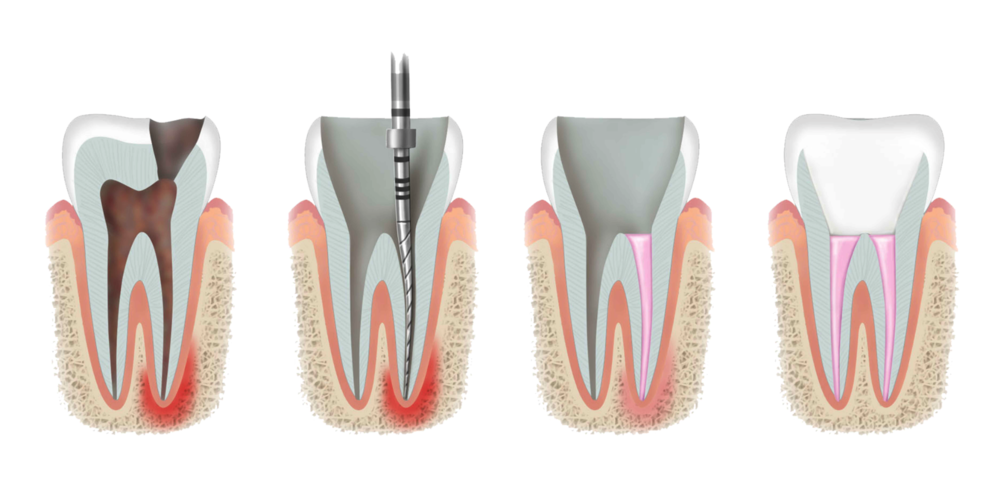
How Is Root Canal Done and What to Expect Afterwards
Introduction
A root canal is a dental treatment crucial for saving a tooth plagued by infection or nerve damage. This procedure not only alleviates pain but also stops the infection from spreading, ensuring your oral health remains intact. The goal here is to demystify the root canal process, offering insights into each step, from pain management to post-treatment expectations.
Understanding the Root Canal Treatment Process
The root canal treatment, often simply referred to as a ‘root canal’, is a dental procedure aimed at saving an infected tooth. It’s a step-by-step process designed with patient comfort in mind. Let’s break it down to understand it better. So, how is root canal done?
Step 1: Numbing the Tooth with Local Anesthesia
Before anything else, pain management comes first. Local anesthesia, which we prioritize at FineUp Clinic, plays an essential role here.
- What does it do? It numbs the tooth and the surrounding area, ensuring a comfortable experience for the patient during the procedure.
- How is it administered? The dentist injects local anesthesia around the infected tooth using a small needle.
Why is this important? Because contrary to popular belief, a root canal should not be a painful experience. The goal of local anesthesia is to make sure you feel pressure but not pain. That’s why at FineUp Clinic, we use efficient anesthetics to ensure you have as pleasant an experience as possible.
Once the tooth is numb, the actual root canal treatment begins. Upcoming steps involve:
- Removing infected tissue
- Shaping the canals
- Disinfecting and drying them out
- Finally filling them up to prevent reinfection
We’ll delve deeper into these steps in the following sections of this article.
In case you’re wondering about same-day treatment for root canals, you might find our article on Root Canal Treatment in Turkey: Is Same-Day Treatment Possible? useful. But remember, each case is unique and your dentist will recommend what’s best for you based on your individual circumstances.
To summarize, local anesthesia is your friend in a root canal procedure. It helps manage pain effectively and ensures that you stay comfortable throughout the process.
Step 2: Removing Infected Tissue and Shaping the Canals
Once the tooth is numb, the dentist proceeds to the next step of the root canal treatment. This involves carefully removing decayed and infected material from the tooth. A dental procedure like this requires precision to ensure all infection is eliminated while preserving as much healthy tooth structure as possible.
The dentist uses a drill to access the inner part of the tooth, known as the pulp chamber. This area houses the nerve tissue and blood vessels, which are often at the center of an infection. Specialized tools called root canal files are then used to clean out the canals and remove any diseased tissue.
Afterwards, these same canals need to be shaped properly for effective filling. Shaping is vital in a successful root canal treatment as it prepares the canals for filling and sealing, which helps prevent future infections.
This process might sound intimidating, but remember: local anesthesia is used throughout to numb the tooth, ensuring patient comfort during this essential stage of cleaning and shaping in a root canal procedure.
Step 3: Irrigation, Disinfection, and Drying of the Canals
After removing infected tissue, it’s crucial to thoroughly clean the root canals during a root canal treatment. This involves:
- Getting rid of debris: Small particles left behind can hold bacteria and cause future infections.
- Disinfecting the canals: Using special solutions that kill bacteria helps ensure the canals are free from any remaining germs.
Different techniques and solutions are used to achieve a clean environment in the canals. Some commonly used ones are sodium hypochlorite and chlorhexidine, which are known for their effectiveness in killing bacteria.
Once the canals have been cleaned, it’s important to dry them thoroughly before filling them. This is done to remove any moisture that could lead to bacterial growth later on. Dentists usually use absorbent materials called paper points for this purpose.
By following these meticulous steps, we create an inhospitable environment for bacteria and protect the tooth from further damage.
Step 4: Filling the Canals to Prevent Reinfection
After thoroughly cleaning and shaping the root canals, the next important step in a root canal treatment is filling the canals. This crucial phase ensures that reinfection is prevented and the tooth remains strong. Here’s what you should know about this process:
1. Biocompatible Filling Materials
The main material used for filling the canals is called gutta-percha. It is a biocompatible substance that easily adapts to the complex shapes of your cleaned canals. Its ability to work well with your body tissues makes it an excellent choice for restoring your tooth in the long run.
2. Sealing the Tooth
In addition to gutta-percha, dental sealants are applied to create a tight seal within the canal space. This seal acts as a barrier, blocking any potential entry points for bacteria and preventing future infections.
3. Preventing Reinfection
It is crucial to achieve a tight seal during this step. This seal acts as a protective shield against bacteria, ensuring that they cannot re-enter the treated tooth. Paying close attention to detail at this stage sets the foundation for successful healing and long-term dental health.
Once the canals have been properly filled and sealed, the tooth’s strength is restored, allowing you to go back to your normal activities without any discomfort or worry about another infection.
What to Expect Before, During, and After a Root Canal Treatment
Understanding the treatment duration of a root canal is essential. A straightforward case might be completed in just one session, while more complex situations—such as those involving curved or obstructed canals—may necessitate multiple visits. Why the difference? Well, intricate cases require meticulous care to ensure all infected tissue is addressed, and sometimes interim treatments are needed to combat stubborn infections.
Post-Treatment Care
When it comes to post-treatment care, there are several steps patients should follow for smooth healing:
- Protect the temporary filling: Avoid chewing on hard foods on the treated side.
- Oral hygiene: Continue regular brushing and flossing, but be gentle around the affected tooth.
- Follow-up appointments: Don’t miss these as they’re crucial for monitoring progress and placing the permanent crown.
Managing Discomfort After Treatment
After treatment, managing discomfort is key. Patients may experience:
- Mild pain: Usually controllable with over-the-counter or prescribed pain relief. You can check out our article here about feeling pain after root canal treatment
- Sensitivity: Particularly to hot or cold temperatures.
- Swelling: Typically minor and manageable with medication or home remedies like applying an ice pack.
During the recovery period, these symptoms are common but should subside within a few days. If they persist or intensify, contacting your dentist is imperative. They can provide guidance or additional care if necessary.
Remember, attending follow-up visits at FineUp Clinic ensures your recovery is on track and any concerns are promptly addressed.
Seek Expert Dental Care for Root Canal Treatments at FineUp Clinic.
At FineUp Clinic, we have a team of dental specialists who are experts in performing root canal treatments. We combine our knowledge, advanced technology, and a patient-centered approach to ensure that the procedure is done with minimal discomfort.
Why Choose FineUp Clinic for Root Canal Treatment?
- Our dental specialists are skilled in handling even the most complex dental conditions.
- We use advanced technology to accurately diagnose and treat root canal infections.
- Our team prioritizes your comfort throughout the treatment process.
Don’t Wait! Act Fast to Save Your Natural Teeth
If you’re experiencing any of these symptoms or suspect a dental infection, it’s important to seek immediate dental care:
- Severe toothache
- Sensitivity to hot or cold foods/drinks
- Swelling around the affected tooth
- Discoloration of the tooth
Time is crucial when it comes to preserving your natural teeth. Delaying treatment can lead to further damage and may result in tooth extraction as the only option.
The Range of Dental Services We Offer
While root canal treatments are one of our specialties, we also provide a wide range of other dental services to cater to all your oral health needs:
- Comprehensive dental examinations: Regular check-ups and screenings to detect any potential issues early on.
- Preventative oral care advice: Personalized guidance on maintaining good oral hygiene habits and preventing dental problems.
- Restorative procedures: Solutions for repairing damaged or decayed teeth, such as fillings, crowns, or bridges.
- Cosmetic dentistry: Enhancing the appearance of your smile through treatments like teeth whitening, veneers, or Invisalign.
These services highlight our commitment to holistic oral care. Whether you need preventive measures or more extensive treatments, our experienced team is here to assist you.
Remember, your oral health plays a crucial role in your overall well-being. Don’t neglect any dental issues – schedule a consultation with us today!
“A healthy mouth leads to a healthy body.”
Conclusion
Root canal treatment is an effective dental procedure for preserving infected teeth and protecting them from future bacterial invasion. It plays a vital role in maintaining dental health by eliminating pain and infection, while also preventing the loss of natural teeth. Post-treatment care instructions and pain management strategies ensure a comfortable recovery period. Trustworthy dental clinics like FineUp Clinic are equipped to perform this procedure with minimal discomfort, using advanced technology and techniques. The goal is always to help you keep your smile healthy and confident. Remember, early intervention translates to better outcomes. So, if you suspect any dental issues, don’t hesitate to seek professional help.
Experiencing dental discomfort or suspecting a need for a root canal should prompt a visit to a reputable dental clinic like FineUp Clinic. These experts are equipped to handle even the most complex cases with precision and care. Should you require additional intervention, such as tooth abscess treatment or even a second root canal, they possess both the technology and expertise necessary to restore your oral health effectively.
FAQs (Frequently Asked Questions)
What is the role of local anesthesia in a root canal procedure?
Local anesthesia plays a crucial role in ensuring a comfortable experience for the patient during the root canal treatment. It numbs the tooth and surrounding area, effectively minimizing any pain or discomfort during the procedure.
How is local anesthesia administered during a root canal treatment?
Local anesthesia is typically administered by the dentist through an injection near the affected tooth. The injection delivers the anesthetic directly to the nerves, ensuring effective numbing of the area where the procedure will take place.
Why is root canal treatment necessary when a tooth becomes infected?
Root canal treatment becomes necessary when a tooth becomes infected in order to save the natural tooth structure. By carefully eliminating decayed and infected material from the tooth, and filling and sealing the canals, the goal is to prevent reinfection and preserve the integrity of the tooth.
What are the techniques employed for irrigation and ensuring complete drying of the canals during a root canal treatment?
Thorough irrigation is performed to remove debris and disinfect the canals, typically using specialized solutions and tools. Complete drying of the canals is ensured through techniques such as using absorbent materials and air drying to prepare them for filling and sealing.
What materials are used for filling and sealing the root canals during a root canal treatment?
During a root canal treatment, biocompatible materials are commonly used for filling and sealing the root canals. These materials are carefully selected to create a hermetic seal, protecting against bacterial invasion and preventing reinfection of the treated tooth.
What are some common experiences during the recovery period after a root canal treatment?
Common experiences during the recovery period may include sensitivity or mild swelling. It’s important to follow post-treatment care instructions provided by the dentist to manage discomfort and promote optimal healing.
